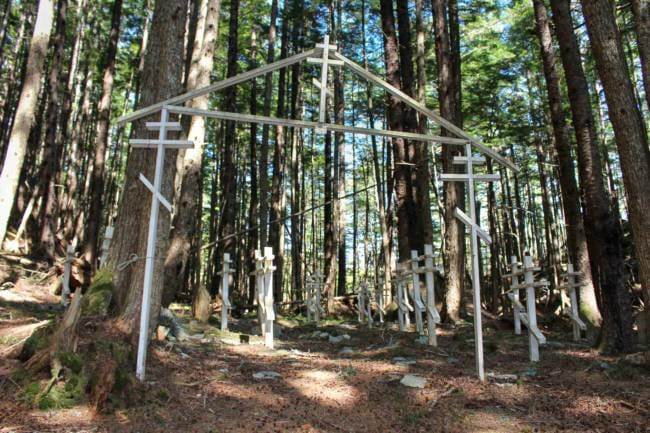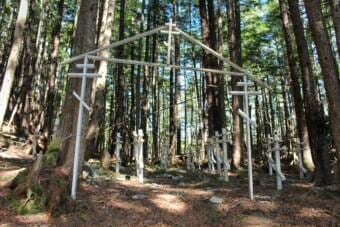
A bill protecting the graves of Unangax̂ people forced to live in internment camps in Funter Bay passed the Alaska Legislature on May 17 and now awaits Gov. Dunleavy’s signature.
When the Japanese military invaded the Aleutians during World War II, the U.S. government forced Unangax̂ people to live in two internment camps in Southeast Alaska. They were held there for two years and were not provided with basic necessities like clean water.
About 10% of people died at the Funter Bay internment camps. Most of them were children or elders.
House Bill 10 will protect the graves of Unangax̂ people who died in Funter Bay. Rep. Sara Hannan of Juneau sponsored the bill.
“This camp in particular, you know, it’s just a compounding of errors of history,” Hannan said.
The Unangax̂ people interned at Funter Bay were some of the first Unangax̂ people to come into contact with the Russians. The Russians enslaved them, forced them to relocate to the then-uninhabited Pribilof Islands and made them hunt seals for their fur.
A couple hundred years later, the U.S. government also forced the Unangax̂ in the Pribilofs to hunt seals.
“The men placed in internment in Funter Bay are still forced to return to the islands in the summer to seal for the government and told ‘If you don’t do this, we’ll never let you return home,’” Hannan said.
Not a lot of people know about this history. That is why the group Friends of Admiralty Island sought legislative action to protect these graves. They went to their Juneau representative at the time, former Rep. Sam Kito, to talk about the issue. Kito then passed the issue along to Hannan when she was elected.
Hannan introduced a bill to protect the Funter Bay cemetery to last year’s Legislature. She and her staff, along with Unangax̂ elders and the Friends of Admiralty Island, worked hard to educate Alaska lawmakers about the Funter Bay internment camps and the lasting effects of these camps on the families.
The bill was making headway in the Legislature — until the pandemic disrupted the session.
When the bill was reintroduced this year as House Bill 10, it went pretty smoothly. Most Alaska lawmakers already knew about the bill from last year and were supportive.
Martin Stepetin advocated for the bill during last year’s and this year’s Legislatures. He is also a member of the Friends of Admiralty Island.
“It went kind of unnaturally fast in the legislature this year, which is really great, you know? We’re super proud of that,” Stepetin said.
Stepetin is Unangax̂ (Aleut) and Tlingit, and his grandparents were interned at Funter Bay. To Stepetin, the state recognizing the violent past of the land they own at Funter Bay was a crucial aspect of the bill.
“What happened to the Aleuts in 1942 by the federal government was a really bad thing,” Stepetin said. “It was a really bad thing that we don’t ever want to happen again. And the only way we can ever protect ourselves from things that happened to us, by us, is to remember it. That’s why we have history class. That’s why we have history.”
To Stepetin and the Friends of Admiralty Island, the work has just started. There are other cemeteries in Southeast Alaska that are not protected, such as the cemetery in Killisnoo on Admiralty Island. Stepetin would like to seek protection of this cemetery next.
Juneau residents can visit the Juneau-Douglas City Museum throughout the summer to see an exhibit about the Unangax̂ internment camps during WWII. The exhibit is open through Oct. 18.


